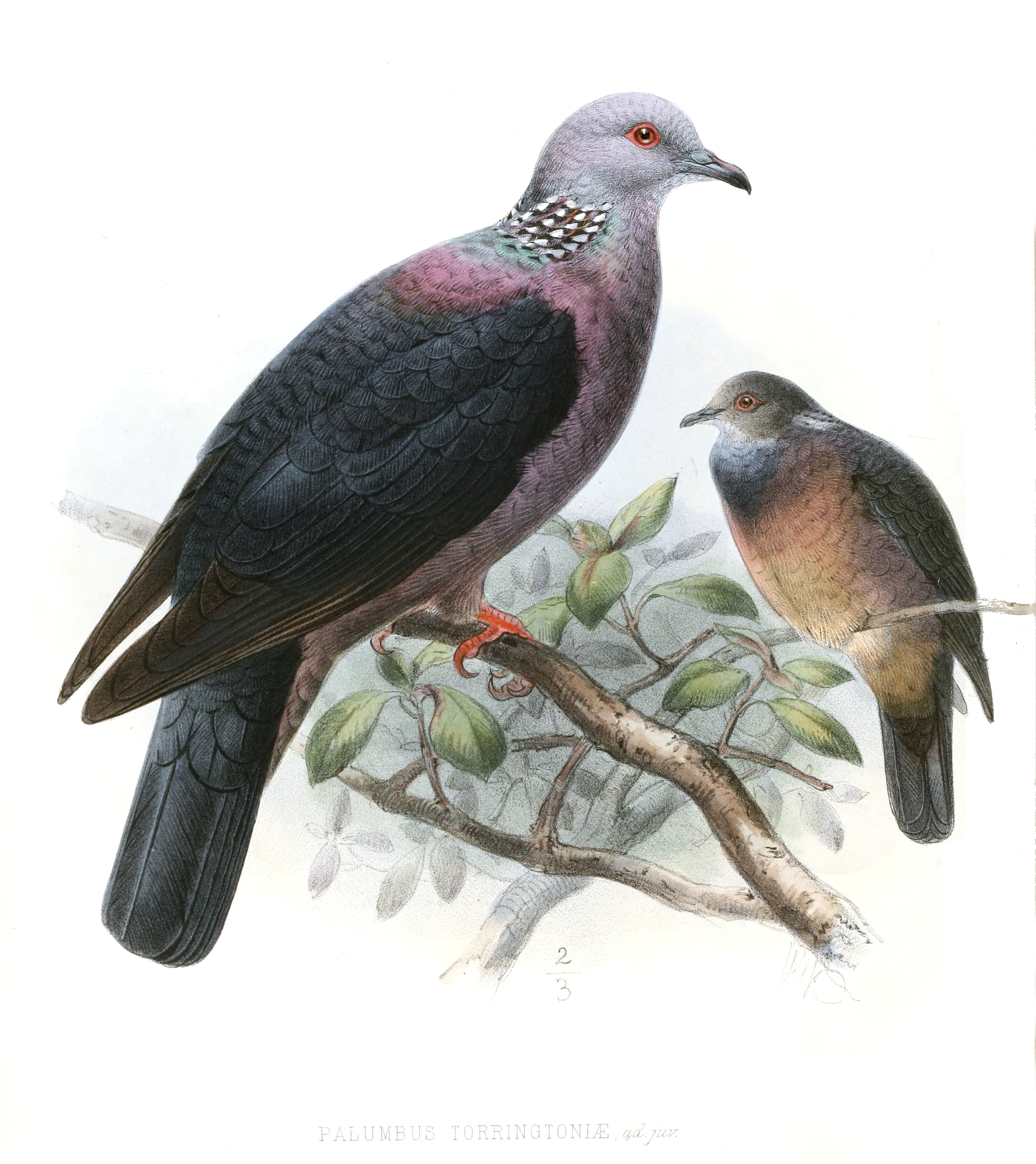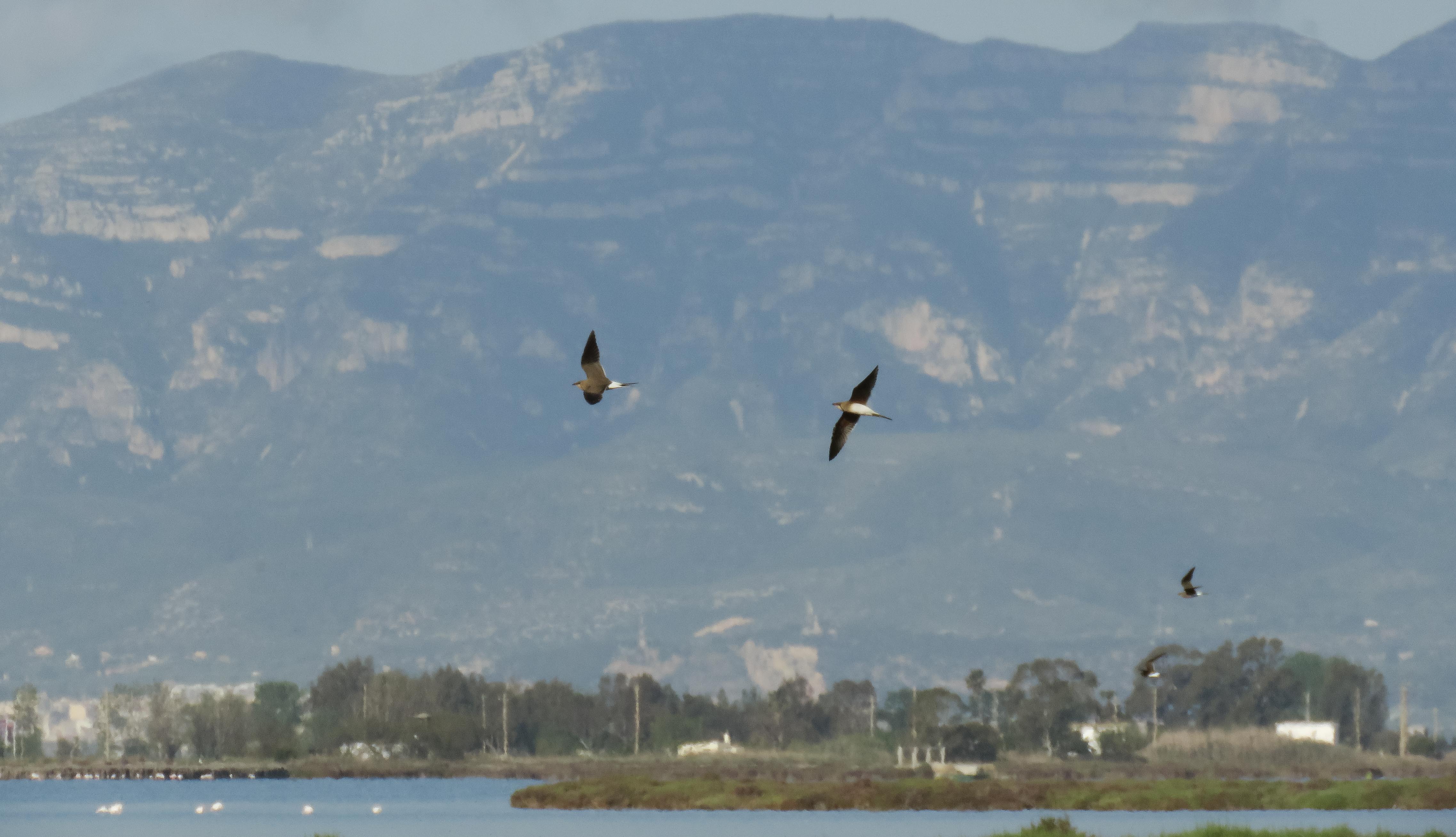A 5am start bound for the Horton Plains. Enroute we stopped at a small dam where Sri Lanka Woodpigeons gather to drink at dawn. Sure enough the first birds were already present and we also saw a flock of Sri Lanka White-eyes. When we arrived at the entrance gate to the National Park we were surprised to join a long queue of vehicles packed with day-trippers all intent on walking the same trail to a viewpoint. Thankfully we were heading elsewhere, to the optimistically-named Whistling-Thrush pools, but despite a long vigil, there was no sign of the target species. However, we did enjoy watching both wintering Green and Large-billed Leaf-Warblers. Along a nearby trail we encountered a mixed-species flock that included our first Dark-fronted Babblers and Orange Minivets. We retraced our route back to the dam where we heard, but failed to see, a Sri Lanka Bush-Warbler. A passing steam train on its way to Kandy was a novelty as was a passing swarm of bees! We returned to the Nuwara Eliya waterfall and despite it being in the middle of the day we were soon watching 2 Sri Lanka Whistling-Thrushes albeit our views of the male were fleeting on each occasion. Whilst having lunch a juvenile Legge's Hawk-Eagle flew along a distant ridge. Dilu consulted with some of his senior colleagues and decided we should return to the Boy Scouts Camp ravine as they considered it a good site to see the Bush-Warbler. Finding another male Kashmir Flycatcher there was a promising start and having a Warbler respond to playback of the calls of the Bush-Warbler added some excitement until it eventually showed itself to be a Blyth's Reed Warbler. As this happened twice more we were cynically beginning to wonder whether the calls we were playing were actually those of BRW, and worse, wondering whether Sri Lanka Bush-Warbler was even present at the site - even Dilu seemed to be losing interest. As dusk approached we took up position hoping the Sri Lanka Scaly Thrush would perform but whilst there was no sign of it, completely unprompted by us, a Sri Lanka Bush-Warbler popped into view!
Eastern Cattle Egret 200
Indian Pond-Heron 5
Brahminy Kite 1
LEGGE'S HAWK-EAGLE 1 juv
White-bellied Sea-Eagle 1
Sri Lanka Junglefowl 6
Rock Dove 5
SRI LANKA WOODPIGEON 8
Spotted Dove 2
Indian Swiftlet 6
Blue-tailed Bee-eater 6
Hill Swallow 10
Grey Wagtail 10
Paddyfield Pipit 6
ORANGE MINIVET 3
Red-vented Bulbul 6
Yellow-eared Bulbul 8
Brown Shrike 2
SRI LANKA WHISTLING-THRUSH 2
Pied Bushchat 6
Kashmir Flycatcher 1 male
Dusky Blue Flycatcher 3
DARK-FRONTED BABBLER 3
Sri Lanka Scimitar-Babbler 3
Zitting Cisticola 10
Plain Prinia 2
SRI LANKA BUSH-WARBLER 1
Blyth's Reed Warbler 3
Grey-headed Canary-Flycatcher 2
Green Warbler 6
Large-billed Leaf-Warbler 1
Velvet-fronted Nuthatch 2
Pale-billed Flowerpecker 6
SRI LANKA WHITE-EYE 15
Scaly-breasted Munia 1
House Sparrow 10
Sri Lanka Woodpigeon near Horton Plains
Birdlife consider this species qualifies as Vulnerable as it has a small, declining, population and range, which are severely fragmented as a result of the destruction of hill and montane forest.

An illustration of sri Lanka Woodpigeon by Keulemans from A History of the Birds of Ceylon (1880).
Birdlife consider this species qualifies as Vulnerable as it has a small, declining, population and range, which are severely fragmented as a result of the destruction of hill and montane forest.

An illustration of sri Lanka Woodpigeon by Keulemans from A History of the Birds of Ceylon (1880).
Sri Lanka White-eyes near Horton Plains
views as we climbed to the Horton Plains
the Whistling-Thrush pools at the Horton Plains
the Whistling-Thrush pools at the Horton Plains
Green Warbler at the Horton Plains
Large-billed Leaf-Warbler at the Horton Plains
Yellow-eared Bulbul at the Horton Plains
Birdlife consider this species Near Threatened as it has a very small global range, and although it remains common in suitable habitats and can tolerate modified habitats, its distribution and population size are likely to have been negatively affected by habitat loss and degradation.

Birdlife consider this species Near Threatened as it has a very small global range, and although it remains common in suitable habitats and can tolerate modified habitats, its distribution and population size are likely to have been negatively affected by habitat loss and degradation.

the Horton Plains
Sambar at the Horton Plains
Indian Hare at the Horton Plains
Zitting Cisiticola at the Horton Plains
Blue-tailed Bee-eater at the Horton Plains
Black-lipped Lizard at the Horton Plains
all too soon it was time to descend from the Horton Plains
having narrowly missed a photo opportunity of a passing steam train we thought our luck was in when the crossing was closed ...
... it wasn't, but perhaps being Whistling-Thrush blue it was an omen
Sri Lanka Whistling-Thrush at Nuwara Eliya
Birdlife consider this species to be Endangered because it has a very small, severely fragmented population and range, which are undergoing a continuing decline as a result of degradation and destruction of upland forest.

the endemic Purple-faced Leaf-Monkey at Nuwara Eliya
the Boy Scout Camp ravine at Nuwara Eliya
Sri Lanka Scimitar-Babblers at Nuwara Eliya
Birdlife consider this species to be Endangered because it has a very small, severely fragmented population and range, which are undergoing a continuing decline as a result of degradation and destruction of upland forest.

the endemic Purple-faced Leaf-Monkey at Nuwara Eliya
the Boy Scout Camp ravine at Nuwara Eliya
Sri Lanka Scimitar-Babblers at Nuwara Eliya
Male Kashmir Flycatcher at Nuwara Eliya
Birdlife considers this species Vulnerable having a small, declining population and breeding range, which is also severely fragmented, as a result of the destruction of temperate, mixed deciduous forests.
Birdlife considers this species Vulnerable having a small, declining population and breeding range, which is also severely fragmented, as a result of the destruction of temperate, mixed deciduous forests.
Rhinoceros-horned Lizard at Nuwara Eliya
Dusky Blue Flycatcher at Nuwara Eliya
Sri Lanka Bush-Warbler at Nuwara Eliya
Birdlife consider this species Near Threatened as it has a moderately small range, within which it is apparently scarce and localised. Although much of its habitat remains secure, it may be declining as a result of habitat loss in some areas.
Birdlife consider this species Near Threatened as it has a moderately small range, within which it is apparently scarce and localised. Although much of its habitat remains secure, it may be declining as a result of habitat loss in some areas.

















































